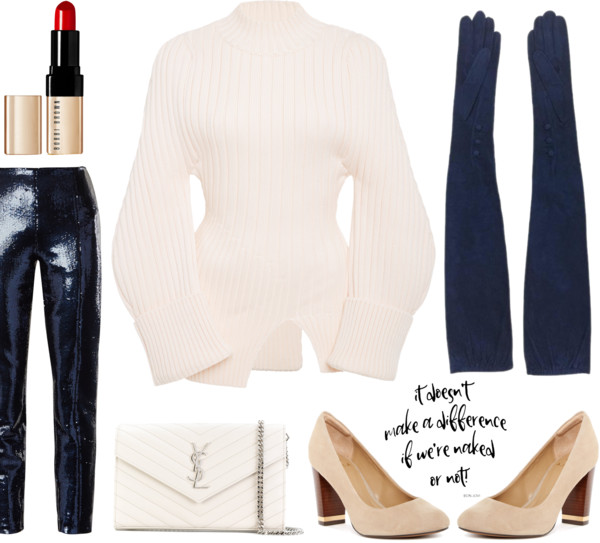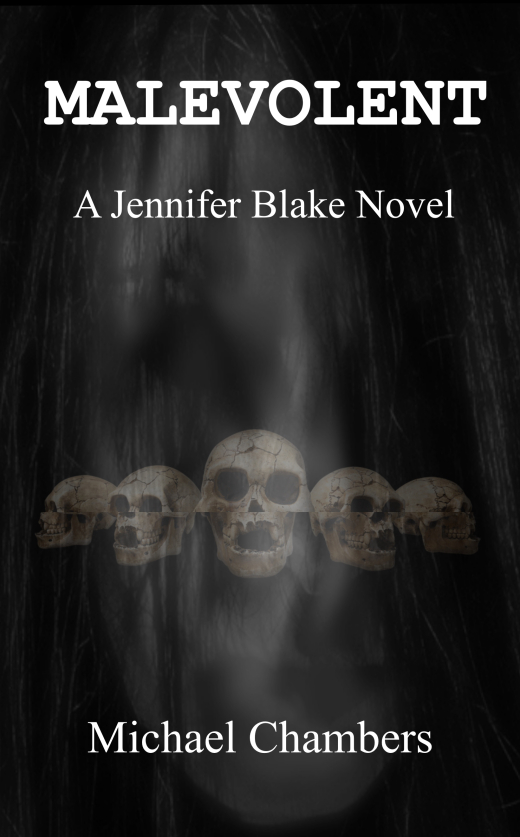There are some things in life that you try just once, like the hair-raising, death-defying activities on your bucket list: bungee jumping, sky diving, etc. And then there are activities that you partake in when trying your hand at learning a new skill: pottery making, learning to play the ukulele, or some other (generally) nonthreatening life skill. Some of these skills you might decide you want to pursue and make a part of your daily life.
Trying new things and exposing students to new areas of interest is a tactic used in schools in order to expand students’ areas of interest. More often than not, people never know that they have a knack for something until they decide to try it out. Many adults and teens may remember having taken an art or music course in elementary school–not necessarily because they wanted to do so, but because it was mandatory. Speaking for myself, I’ve never had any idea of what I want to pursue in life, so I felt that those introductory classes back in elementary school were a good learning experience about what I could do (or not do, in my case).
I have never been able to think of myself as being particularly talented in any area. Sure, I took chorus classes from 4th to 6th grade, and a number of art classes in the years thereafter, but I soon realized that I didn’t possess anything close to the talent of say, a Beyonce or a Picasso. In fact, taking those classes in elementary school made me realize what I would not be able to do. I never had much patience in learning music, though I appreciated watching and listening to it being performed. By myself, however, I struggled to read music notes and did the least I could do to obtain a passing “S” (an “S” was a grade that stood for “Satisfactory”).
When my class began its “Recorder Dojo” unit during the last quarter of the year, I found myself excited to come to music class. We would be learning to play the recorder by the difficulty level of a set of nine songs; each song would teach a few new music notes on the recorder. I was excited, but as it turned out, I needed to know how to read music in order to succeed (Whoops). Though we spent 2-3 months learning to play the recorder, I never advanced past the 4th song (I only ever earned my green belt and below) because I got stuck on the fifth song. The difficulty level between the first few songs was pretty low and they all used the same notes, but then came the fifth song, “Old MacDonald Had A Farm”, and oh boy, did I have a hard time with that. And then, the year ended and I moved on to middle school, where I forgot all about my recorder that was tucked away to gather dust in my sock drawer (actually my sock drawer is very clean, I just never pulled out the recorder again, until now).
Now, I’m in my senior year of high school, taking a Dual Enrollment English class. We just finished reading the book, Learn Better, by Ulrich Boser. After a series of socratic seminars on the book’s themes, our teacher was inspired to assign a project, tasking my fellow students and I to learn anything we chose in a period of two weeks using the principles and tips taught in the book. For my project, I chose to (re)learn how to play the recorder.
I chose learning to play the recorder as the topic of my project, because I have often watched my talented classmates with a silent envy. I wish that I had chosen to put forth more effort in my elementary music classes because I find that I missed out on learning something amazing. If listening to music feels so good, wouldn’t knowing that I could make my own feel even better (even though I was just learning to play the recorder)?
In order to begin (re)learning how to play the recorder, I had to utilize the “writing what you know” tactic from Learn Better. “By writing down what we know, we’re preparing our minds to make more connections within that body of expertise,” (Boser 52) meaning that in order to figure out what I wanted to learn, I had to figure out how much I already knew about playing the recorder.
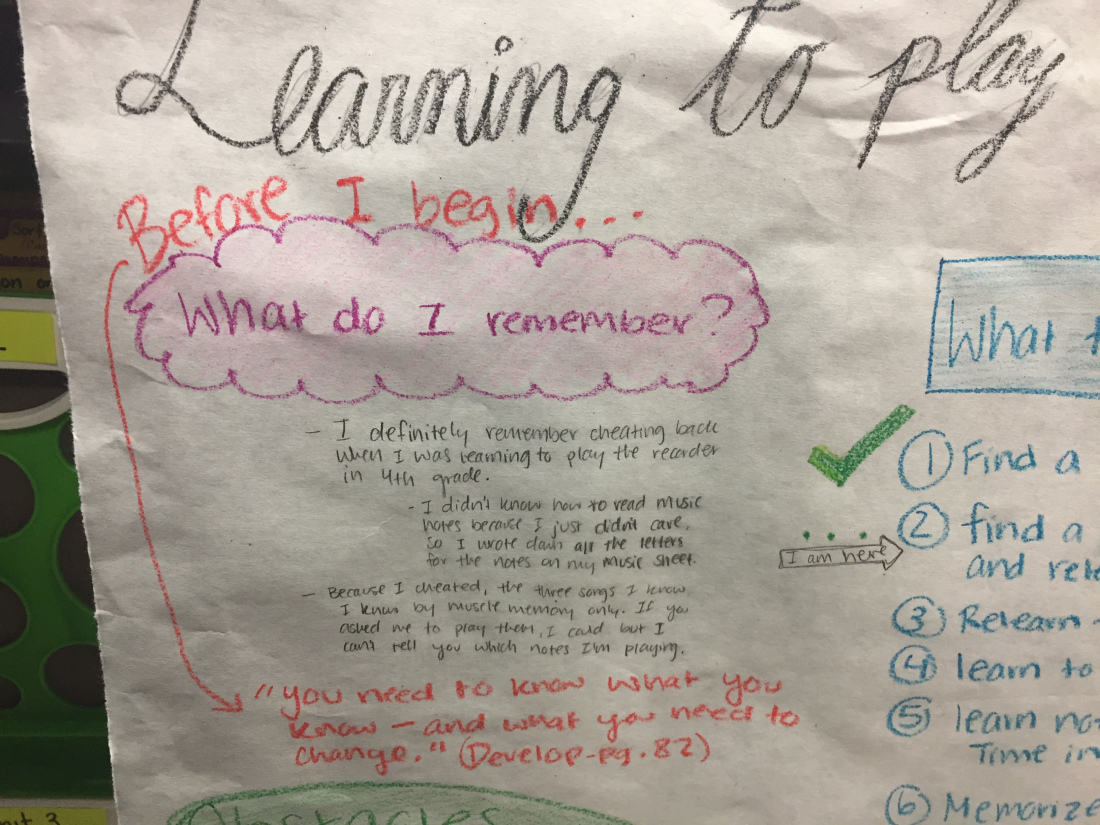
What I already knew:
- I remembered three songs by heart (“Hot Cross Buns”, “Merrily We Roll Along”, and “It’s Raining”), but somewhere along the way, I had forgotten how to play the second song, “Gently Sleep”.
- I definitely did not remember how to read music.
- I only remembered how to play the notes, “B”, “A”, and “G”.
Next, I had to decide what I wanted to learn and I needed to establish a reasonable goal. Naturally, I overestimated my abilities and decided to learn how to play Frozen’s “For The First Time in Forever”, but I’ll leave that bit out for later.
In learning how to play the song I chose, I had to make a list of steps to help me organize how I was going to learn.
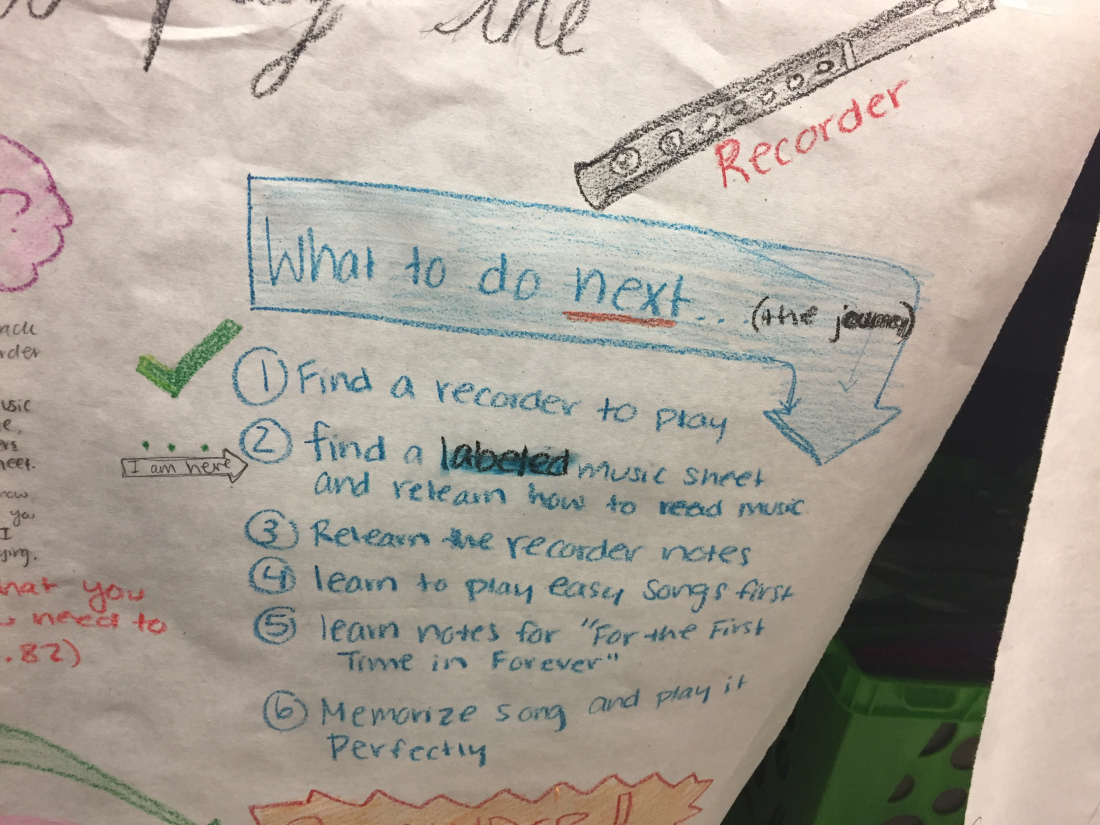
In order to learn how to play the song, I would need to:
- Dig out my old recorder(s) (I had bought about four, each was a different color)
- Find a labeled music sheet and (re)learn how to read music
- (Re)Learn how to play the notes on the recorder
- Learn how to play “For The First Time In Forever”
The first step, finding a recorder, took me maybe ten minutes…of digging through every hiding place in my house to find ANY recorder…(In my defense, we did move houses, so I couldn’t be expected to know where EVERYTHING was, right?). Anyway, I found the recorder and decided to print out all of the sheet music from the “Recorder Dojo” program, along with a few recorder fingering charts that taught which holes to cover in order to play each note. Then, I set the sheets aside in my English binder and forgot all about them during the hustle and bustle of the last two weeks before Winter Break.
When the checkpoint day arrived, I realized that I needed to seriously get started on my learning, so that night I pulled out my recorder and double-checked that I really remembered the songs that I thought I knew. The good news was that I did remember (unfortunately, I can’t post the audio, but I have it recorded and can send it upon request).
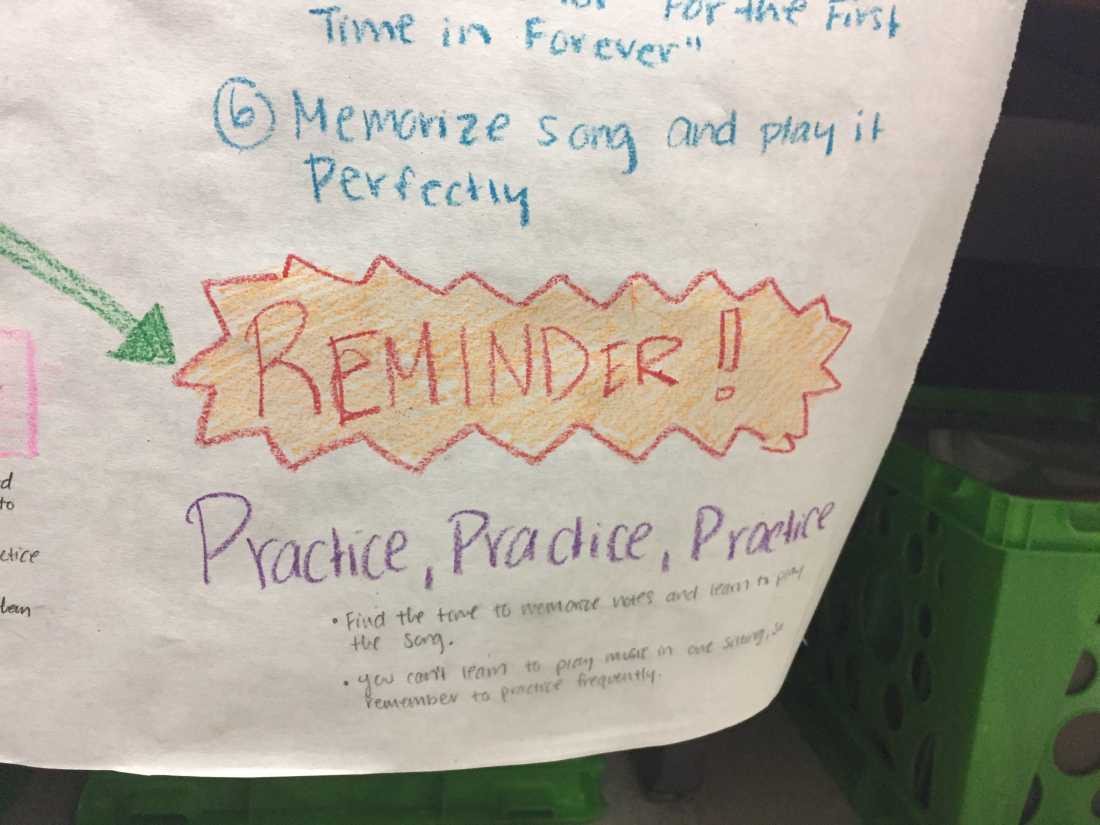
Between the rigorous school week and all of the extra work I had to get in before break, I found little time to study the music notes, so I downloaded an app called “Music Notes” that provided practice learning how to read music. I soon realized that learning and retaining all of that information, in what little I had used of my two weeks, would prove difficult. I decided to print out the music sheet for “For The First Time In Forever” and that was when I realized I had made a grave error. The music sheet was six pages long…and it had a lot of the harder notes…
This realization was a MAJOR setback, and I had to consider adjusting my goals. Considering the amount of time I had left (which wasn’t much), I decided to learn as many of the remaining songs in the “Recorder Dojo” as I could. I started by relearning song number two, “Gently Sleep”. I’m not sure why, but I just couldn’t remember the song for the life of me. It was useful to begin my learning with this song because it was low-level and allowed me to apply my knowledge of the easier music notes.
I had a little difficulty in adjusting to something I didn’t already have memorized, but I was glad that I was able to play the song without cheating (when I was in elementary school and didn’t know how to read the notes, I would write the letters under the notes so that I wouldn’t have to think and play at the same time). Since then, I have learned to play two more songs: “Old MacDonald Had A Farm” and “When The Saints Go Marching In”. I experienced a LOT of difficulty in learning these songs because the new notes were drastically different in the way that the recorder was handled.
I took to recording my efforts so that I could pinpoint where I was making mistakes. This was in line with the Learn Better practice of tracking mistakes. “When we’re tracking our performance, we’re more focused on improving.” (Boser 80) This was true in that I was able to listen to each recording and figure out where I was messing up: When the notes came out sounding whistle-y, I knew that I hadn’t covered the recorder holes correctly while I was playing and the air was finding an escape.
Still, learning the notes to the songs was frustrating because they were so different and I made so many mistakes. Sometimes, I had to remind myself to use the Learn Better principle of slow thinking. “Before engaging in a learning task that takes a lot of concentration, people should work to push aside anxious thoughts…By spending time alone, we dial down the speed of our thinking, and so we can contemplate different angles…”(Boser 204). By taking a few moments to calm myself down after each mistake, I was able to look over each recorded mistake and try again from the beginning, with a clear head.
As my project comes to a close, I have learned the following things:
- I can read most of the notes off of a music sheet (I would need some time to work each one out, but I can figure them out from what I’ve learned)
- I have learned to play songs 1-6 in the “Recorder Dojo”: “Hot Cross Buns”, “Gently Sleep”, “Merrily We Roll Along”, “It’s Raining”, “Old MacDonald Had A Farm”, and “When The Saints Go Marching In”.
- Learning to play an instrument takes time. You need to give yourself the time to learn each note, and adjust to each new piece. It’s not something that can be done it one day, rather it takes revisiting to ensure that you have really learned something.
- I should take a look at the music before I blindly choose a song I like: “For The First Time In Forever” was grossly above my skill level.
Though, I didn’t reach my end goal after these two weeks, I believe that I have learned a larger lesson on time management and an appreciation for music and those who learn to play it.
Advertisements Share this:


